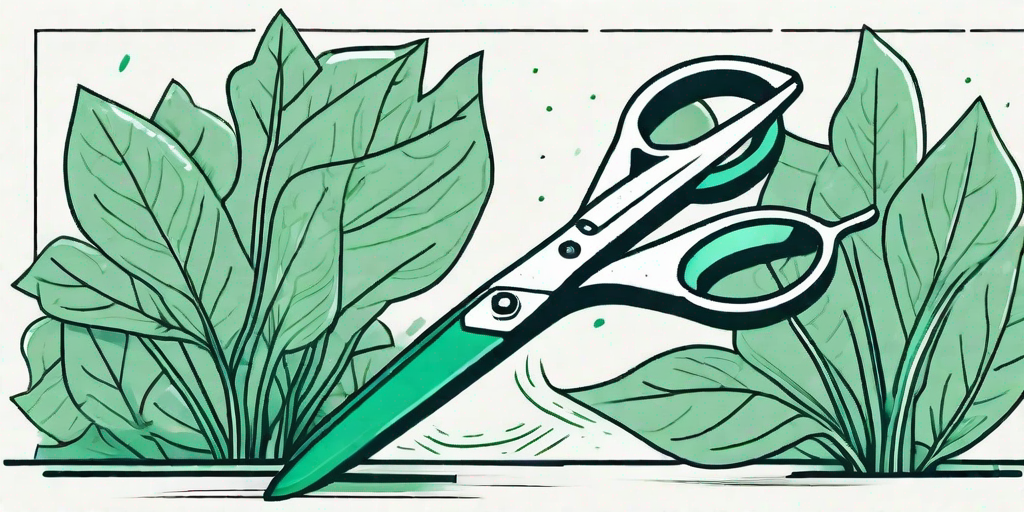
Welcome, fellow green thumbs and zucchini enthusiasts! If you've ever found yourself staring at your zucchini plants, secateurs in hand, with a look of utter confusion, then you're in the right place. We're about to embark on a horticultural adventure that will transform your zucchini plants from unruly beasts into well-behaved botanical beauties. So, buckle up, it's time to trim that fat!
The Art of Pruning: Why Bother?
Pruning, much like flossing, is one of those tasks that we all know we should do, but often neglect. However, just as neglecting to floss can lead to some rather unpleasant dental issues, neglecting to prune your zucchini plants can lead to a whole host of problems.
For starters, pruning helps to improve air circulation, which in turn reduces the risk of disease. It also allows more sunlight to reach the fruits, leading to faster and more uniform ripening. Plus, it makes your plants look neat and tidy, which let's face it, is reason enough to get pruning.
When to Prune
Timing is everything when it comes to pruning. Prune too early and you risk damaging the plant, prune too late and you might as well not bother. The best time to prune your zucchini plants is when they're about 6-8 weeks old. By this point, they should have a good number of leaves and be starting to produce fruit.
It's also a good idea to prune on a dry day, as this reduces the risk of disease. So, keep an eye on the weather forecast and plan your pruning session accordingly.
Getting Down to Business: How to Prune
Now that we've covered the why and when, it's time to delve into the how. Don't worry, it's not as complicated as it sounds. In fact, with a bit of practice, you'll be pruning like a pro in no time.
First things first, you'll need a pair of sharp secateurs. Dull blades can damage the plant and make the job a lot harder than it needs to be. So, make sure your secateurs are up to scratch before you start.
Step-by-Step Guide to Pruning
-
Start by removing any dead or diseased leaves. These are easy to spot as they'll be yellow or brown and may have spots or patches of mold.
-
Next, look for any leaves that are shading the fruits. These are usually the larger, older leaves at the bottom of the plant. Removing these will allow more sunlight to reach the fruits.
-
Finally, thin out any overcrowded areas to improve air circulation. Be careful not to remove too many leaves though, as the plant needs them for photosynthesis.
Common Pruning Mistakes to Avoid
Like any skill, pruning takes practice. And as with any skill, there are a few common mistakes that beginners often make. But don't worry, we're here to help you avoid these pitfalls.
One of the most common mistakes is over-pruning. It's easy to get carried away and start hacking away at your plants, but remember, less is more when it comes to pruning. The aim is to improve the plant's health and productivity, not to give it a buzz cut.
Not Pruning at the Right Time
As we mentioned earlier, timing is crucial when it comes to pruning. Pruning too early can stunt the plant's growth, while pruning too late can reduce its productivity. So, make sure you're pruning at the right time to get the best results.
FAQs
Can I prune other types of squash in the same way?
Absolutely! The principles of pruning are the same for all types of squash. Just remember to adjust the timing based on the plant's growth rate and maturity.
What should I do with the pruned leaves?
You can compost them, use them as mulch, or even feed them to your chickens if you have them. Just make sure they're not diseased, as this can spread to other plants.
Can I prune my zucchini plants in the rain?
While it's not ideal, you can prune in the rain if you really need to. Just be aware that wet conditions can increase the risk of disease, so it's best to wait for a dry day if possible.
Wrapping Up
And there you have it, folks! A foolproof guide to pruning your zucchini plants. With a bit of practice and patience, you'll soon have the neatest, most productive zucchini plants on the block. So, what are you waiting for? Grab those secateurs and get pruning!
Remember, pruning is a skill, and like any skill, it takes time to master. But don't worry, with this guide in hand, you're well on your way to becoming a pruning pro. Happy gardening!











